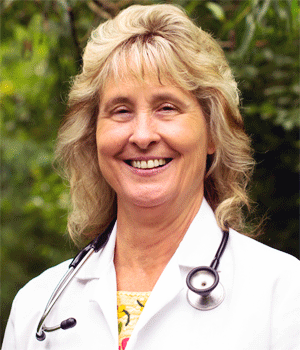The Problem
Cardiovascular disease affects us all: it is the leading cause of death and disease in the United States: Atherosclerosis. We call these “cardiovascular events.” If, like half of all Americans, you are considered obese, you are at increased risk for cardiac events. Even if you are among the non-obese, realities of modern life – including our diets, our lack of time for exercise, and our elevated levels of stress – are associated with abnormal lipid levels and elevated cardiac risk.
- 13 Million adults have coronary heart disease (CHD)
- 5 Million adults have experienced strokes
- Many millions have “claudication,” or debilitating leg cramps due to inadequate arterial circulation in their legs
Why? Because we have “dyslipidemia.”
Definition of Dyslipidemia
What is dyslipidemia? Dyslipidemia simply means abnormal lipids. Meaning abnormal fats in our blood streams, including:
- Elevated total cholesterol
- Elevated low-density lipoproteins (LDL, or “bad” cholesterol)
- Low levels of high-density lipoproteins (HDL, or “good” cholesterol)
- Elevated triglycerides
- Elevated lipoprotein-a (Lpa)
The RISKS of Dyslipidemia
Dyslipidemia affects approximately 50% of adults in the U.S. Dyslipidemia is THE most prevalent, and THE most important MODIFIABLE risk factor for atherosclerosis.
You Can Make a Difference!
Modifying our lipid profiles really makes a difference in our cardiac risk:
- For every 1% reduction in LDL, the risk for a cardiovascular event is reduced by 2% !!
- For every 1% increase in HDL, the risk of a cardiovascular event is reduced by 3% !!!
Many Americans think that coronary heart disease (CHD) is a man’s disease. It’s not: Both men and women with CHD have a risk of myocardial infarction that is 20 times greater than those without CHD.
Multiple clinical studies tell us that lipid lowering – especially reducing LDL below 100 – is associated with a 13% reduction in the risk of death.
Rupture of Atherosclerotic Plaque is the Killer in Dyslipidemia
Some Facts About Plaque Rupture:
- The most dangerous atherosclerotic plaques are not those that cause the most obstruction
- Most acute coronary syndromes – including myocardial infarction – are caused by lesions that obstruct less than 70% of the vessel, before they ulcerate and clot
- Non-obstructing plaques that are inflamed have a higher probability of rupture and clot
- It is inflammation of the atherosclerotic plaques that kills: the plaque becomes friable, it ulcerates, exposing underlying fat that causes clot to form – it is this clot that cause acute obstruction, infarction, stroke, death
If You Have Dyslipidemia,You Have Two Goals:
The basis for reducing cardiovascular disease is therefore two-fold:
- Reduce dyslipidemia: lower overall cholesterol levels; and correct lipids to normal as much as possible
- Minimize inflammation: reduce inflammation and stabilize atherosclerotic plaques
Reduce Dyslipidemia
For most of us, this means increasing HDL cholesterol, and reducing LDL cholesterol.
The 5 Natural Treatment Options Include:
- Modify Your Diet:
– Decrease fat / change type of fats consumed: Eliminate saturated fats and trans fats; limit diet to mono-unsaturated and poly-unsaturated oils (vegetable oils, canola oil, fish oil). Changing dietary fat can reduce LDL cholesterol by 10-20%; Daily fish oil supplement can elevate HDL as much as 5-10%.- Increase fiber (nuts, beans): 20-30 grams per day may reduce LDL cholesterol 10-15%.
Eat plenty of fruits and vegetables.- Decrease animal protein; increase whole grain proteins.- If tolerated, Niacin can decrease LDL by 5-25%, and increase HDL by 15-35%.- Increase foods that contain natural anti-inflammatory compounds. - Increase Your Exercise: aerobic activity raises HDL levels; the longer you exercise, the greater the improvement. A meta-analysis of 35 clinical studies revealed that exercising 3-4 times per week, for 40 minutes at a time, results in an increase in HDL of 2.5 mg/dl on average. That’s a modest increase, but was statistically significant across the meta-analysis. Most interesting: it is the length of time that you exercise that is important. Each 10 minutes beyond 20 minutes of exercise duration was associated with an increase in HDL levels of 1.4 mg/dl. Since cardiac risk is thought to drop by 2-3% for every 1 mg/dl increase in HDL, these findings are significant! So get up; get moving!
- Control Your Weight: carrying extra pounds – even just a few – contributes to high LDL cholesterol. Losing as little as 5-10% of your body weight can significantly lower cholesterol and cardiac risk! So a worthy goal to reduce cardiac risk it to control your weight. Exercise helps with this one.
- Stop Smoking! Smoking places you at high risk for cardiac events. You may not be able to change your genetics, but THIS you can change. If you are still smoking, it’s time to quit!
- Reduce Stress: Easier said than done. However, many medical studies reveal that stress elevates LDL cholesterol and blood pressure – both cardiac risk factors. These same studies tell us that developing coping mechanisms for stress help reverse or prevent this effect. Consider signing up for a yoga class, or for meditation. Even regular exercise – with its own healthy effects on your cholesterol levels – will help reduce the effects of stress in your life. Here are some additional simple tips for managing stress in your life.
Guidelines According to the American Heart Association
According to the American Heart Association, total cholesterol levels below 200 mg/dl are desirable. Levels of 240 and above are high risk; anything between 200 and 240 represents a borderline risk area. For LDL (“bad”) cholesterol, less than 100 is good, 190 and above is very high risk, and anything in between falls into a pattern of increasing risk (100-129, near optimal; 130-159, borderline high; 160-189, high). Conversely, you want higher levels of HDL (“good”) cholesterol — levels less than 40 for men and less than 50 for women increases heart disease risk.
Minimize your dyslipidemia by working on these 5 areas to reduce your cardiac risk! And visit us at the Spirit of Health Clinic for your cardiac assessment. See you here.
For more on optimizing your health, stay tuned. We publish one article here about every 1-2 weeks, so check back frequently. Or, so you don’t miss great info, simply sign up to receive updates automatically in your inbox.
Resources:
- Kodama S, et al. (2007) Effect of aerobic exercise training on serum levels of high-density lipoprotein cholesterol. Arch Intern Med 2007; 167:999-1008
- Be sure to visit the Getting Healthy page of the American Heart Association for guidance on these 5 main steps to eliminate your dyslipidemia.



[…] Dyslipidemia – abnormal blood lipid levels – is the main cardiac risk factor for Americans. […]